7 traditions of Christmas and their origins
Christmas keeps reinventing itself through new traditions. How many of you now buy or make a Christmas Eve Box filled with sweets and toys to distract the children, or decorate your gardens (front and back) festooned with fairy lights?
However, some must-do's have been around for centuries; year after year we come back to them and pass them down through the generations. But have you ever wondered why we kiss under the mistletoe or why the robin is the bird of the season (after turkey)?
Here's the story behind seven of our favourite Christmas traditions.
1. Christmas tree
Queen Victoria’s German-born husband, Prince Albert, put up the first Christmas tree in England at Windsor Castle in 1841. The Victorians, great fans of houseplants in general, loved the look and adopted it.
They lit their trees with real candles and embraced tinsel, also a German idea. It was originally made of silver or tin shavings and represented spider's webs, considered a lucky omen in Germany, Poland and Ukraine.
However, the tradition of having an evergreen tree to celebrate winter festivals has roots thousands of years deep. Pagans hung spruce branches in their homes to remind them that spring was on its way. And the Romans decorated their temples with fir trees at the festival of Saturnalia, a kind of early Christmas break when everyone took time out to feast and celebrate.
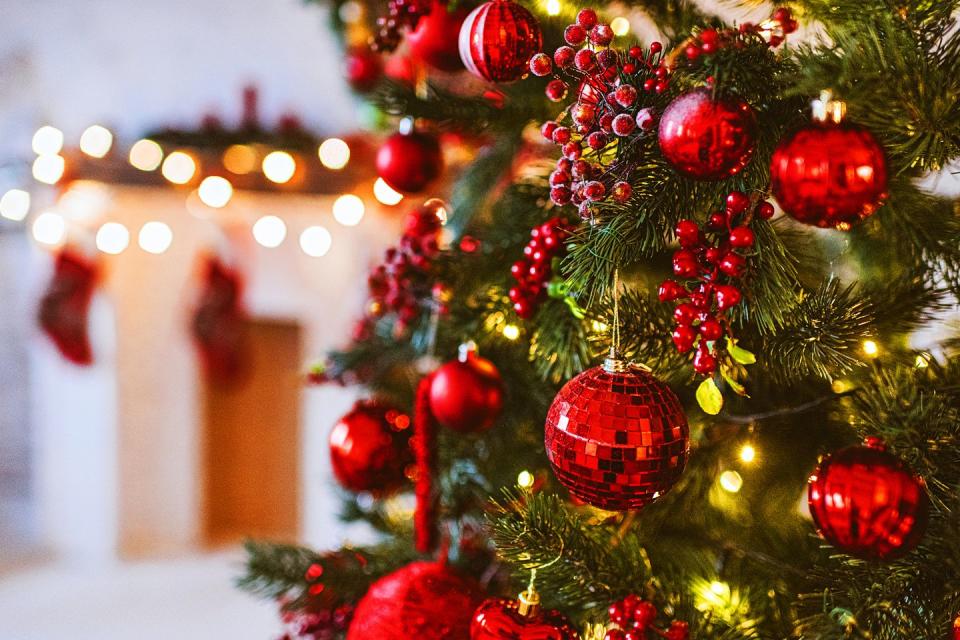
2. Christmas pudding and mince pies
It’s said that the first mince pies had 13 ingredients, representing Jesus Christ and his 12 Apostles. These were exotic Middle-Eastern-inspired delicacies, originating with the Crusaders, and included meat, fruit and spices. The oval shape of these early treats was believed to represent the manger of baby Jesus.
Sometime in the 19th century, the meat disappeared for good. The original cookbook, Mrs Beeton’s Household Management, published in 1861, gives two recipes, one with and one without meat.
Around the same time, plum pudding became a staple of Victorian Christmas fare. Also know as ‘figgy’ pudding, this too had its beginnings in the Middle Ages, in a thick broth known as frumenty.
Making the pudding turned into a ritual itself, and traditionally took place on ‘Stir-up Sunday’, the first Sunday before the Advent season. Each family member would have a stir and make a wish, with the cook adding a silver sixpence for luck.
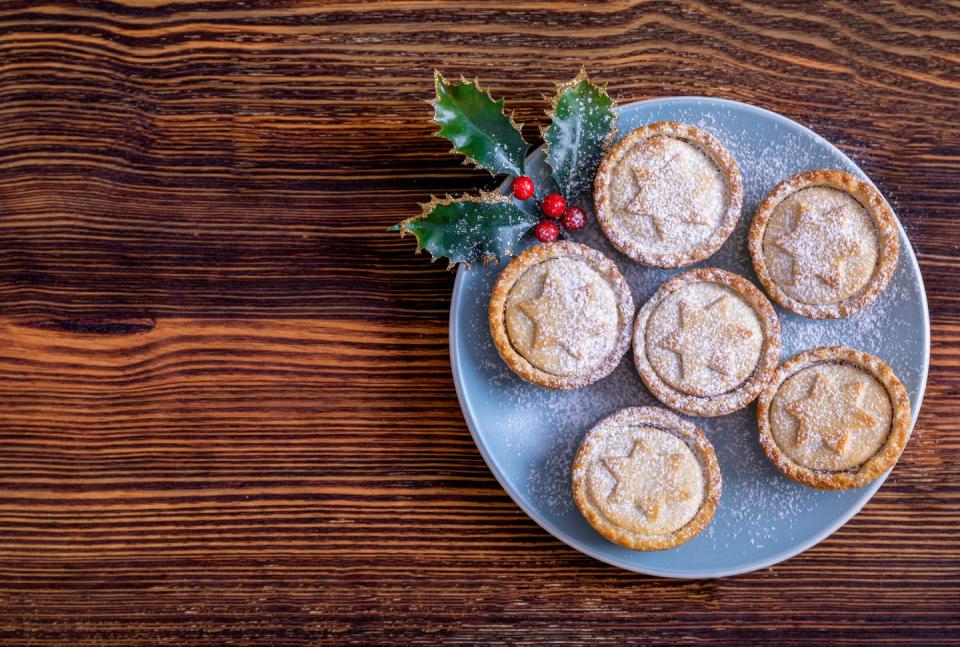
3. Turkey
Goose, pheasant, roast beef, swan or even a rabbit, years ago, what went in the centre of the Christmas Day table depended on your social status and where you lived – in Yorkshire, for example, beef was the favourite until late Victorian times.
Turkeys were first brought to England in the 1520s from Mexico by Levantine traders, which is why they are called 'turkey'. But until modern farming methods arrived in the 1950s, turkey was too expensive for many.
Henry VIII is believed to be the first monarch to eat turkey for Christmas dinner, encouraged by Archbishop Thomas Cranmer. 'He wanted to curb gluttony by only allowing one bird to be served per dish,' says food historian Sam Bilton. 'Due to their size, these "greater fowls" were able to provide more meat.'
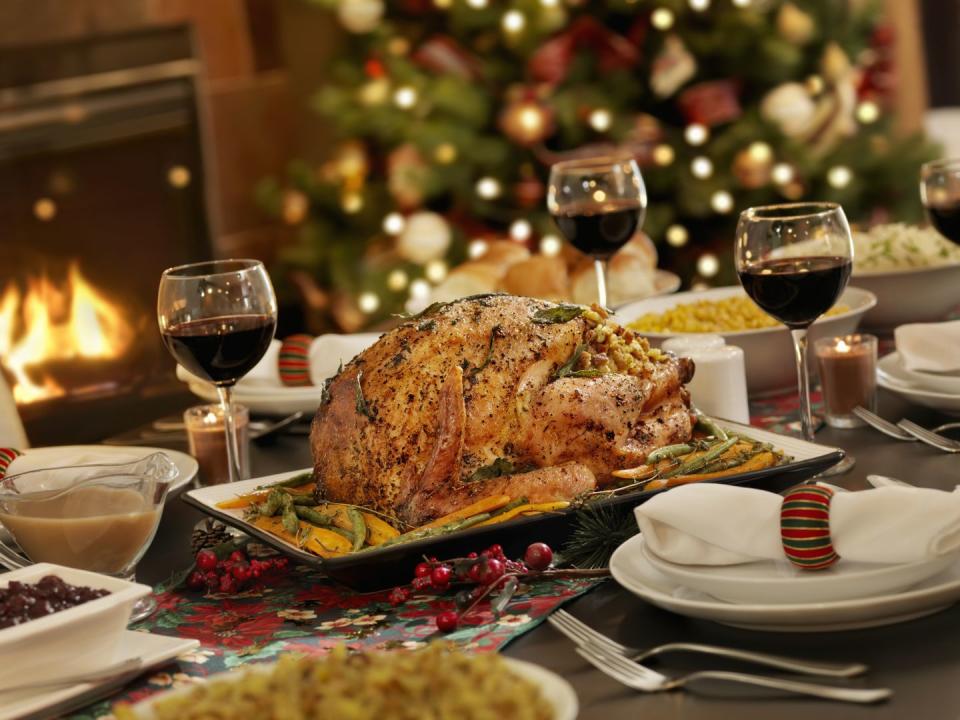
4. Hanging stockings
Hanging Christmas stockings is another Christmas tradition with pre-Christian history. In Germany and Scandinavia, children would leave out their boots filled with sugar, carrots and straw for the Norse god Odin's flying horse, Sleipnir. This is probably where leaving out a snack for Santa and reindeers in the sky came from too.
Anyway, this evolved into the practice of hanging stockings because over time it merged with the legend of Saint Nicholas – in Dutch he's called Sinterklaas and in English, Santa Claus. The legend goes that one day, Saint Nicholas dropped three bags of gold down the chimney of a poor man who had no dowry for his daughters. The gold is still represented today, by an orange.
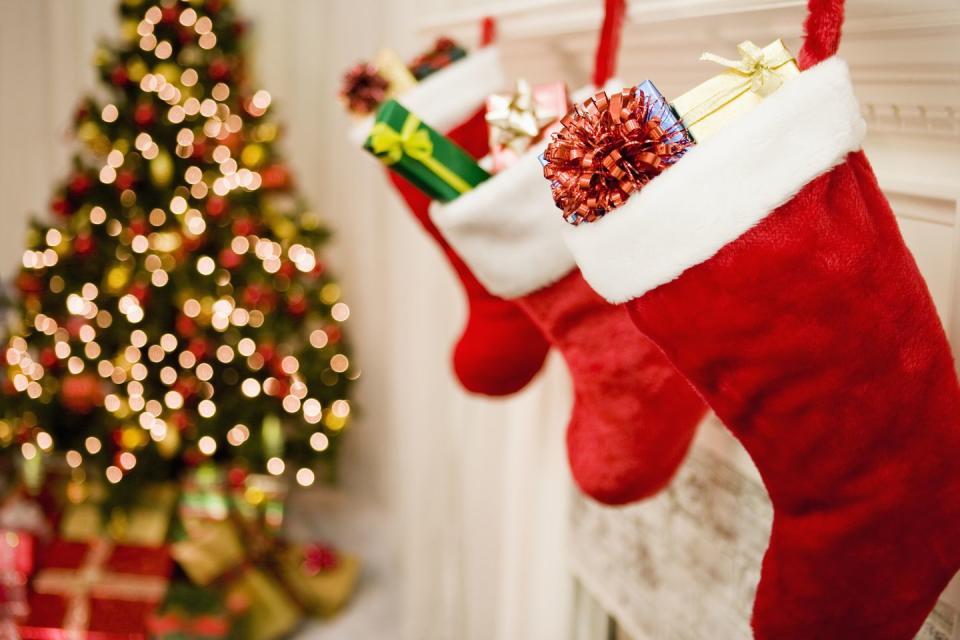
5. Crackers
It’s hard to believe, but the original Christmas crackers were a flop. It wasn't until their 1840s inventor, London confectioner Tom Smith, found a way to make them 'crack' that they took off with the public. Inspired by paper-wrapped French bonbons, this essential table tradition has always contained a joke or motto. But Smith's three sons eventually took over the business and played with the formula, adding hats and novelties to appeal to Victorian families who embraced wholeheartedly the idea of a jolly Christmas party. There were even special crackers with gifts such as wedding rings aimed at maiden aunts and bachelor uncles.
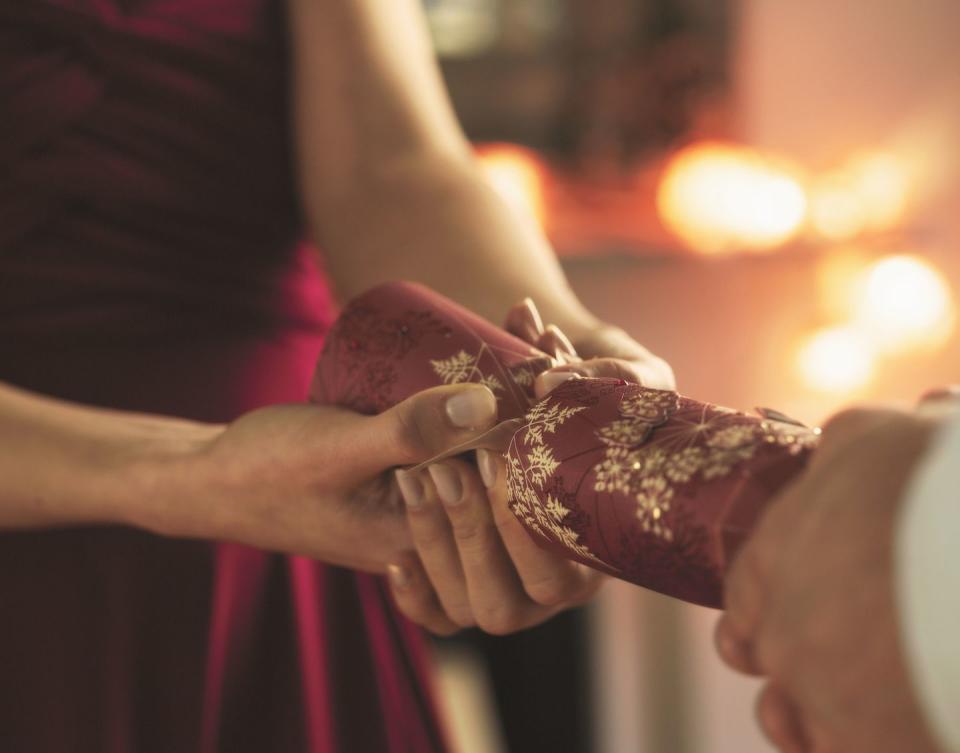
6. Mistletoe
It might be a quick peck on the cheek, but that kiss under the mistletoe has its roots in ancient fertility rites. The plant was considered sacred by Celtic Druids because it blossomed amongst the frosts of deepest winter.
Many varieties are poisonous, but those pearly white berries were also thought to have medicinal qualities. The Greeks and Romans used them to treat stomach disorders, ulcers and epilepsy. And the Druids gave mistletoe tinctures to both humans and animals in the hope that the potion would bring forth fecundity.
Mistletoe eventually became a symbol of Frigg, the Norse goddess of love, and so the familiar custom evolved, which originally dictated that Christmas revellers had to pick a single mistletoe berry with every kiss, until the sprig was empty.
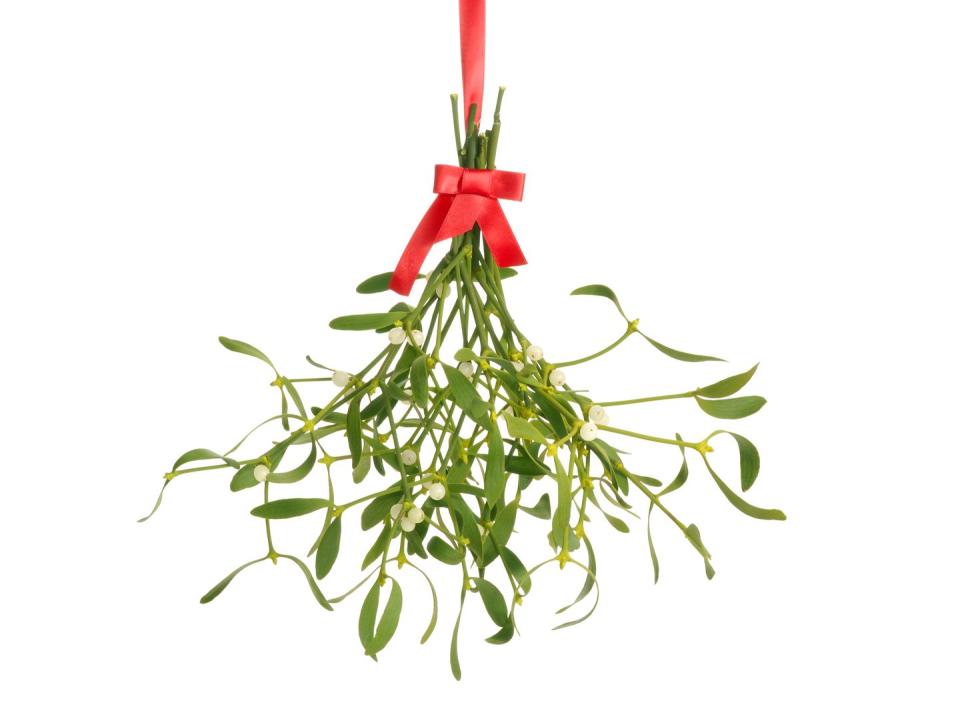
7. Christmas Cards
The first Christmas card was sent in 1843. It was printed by Sir Henry Cole, one of the founders of the Post Office, and designed by his friend, the artist John Horsley. The card was a triptych – in three parts – depicting rich and poor families at Christmas time.
Despite this slightly-guilt inducing start, the idea rapidly took off, because cards cost just a penny to post and only half a penny if the envelope was unsealed. Soon, printing advances brought down the cost of cards and hundreds of designs were created.
The cheery robin became one of the most popular images. Some say it’s because postmen wore red waistcoats and were nicknamed 'Robins', but there’s a direct link to the Nativity too. A fable holds that a robin landed in the Bethlehem stable and fanned its feathers to keep baby Jesus warm, scorching its breast in the process.
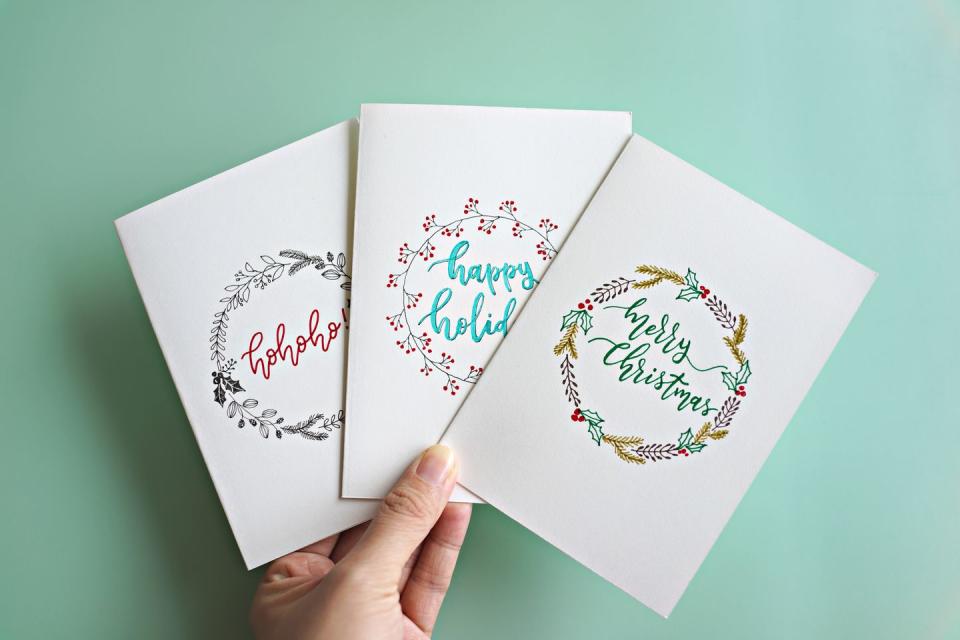
Like this article? Sign up to our newsletter to get more articles like this delivered straight to your inbox.
In need of some positivity or not able to make it to the shops? Subscribe to House Beautiful magazine today and get each issue delivered directly to your door.
You Might Also Like



